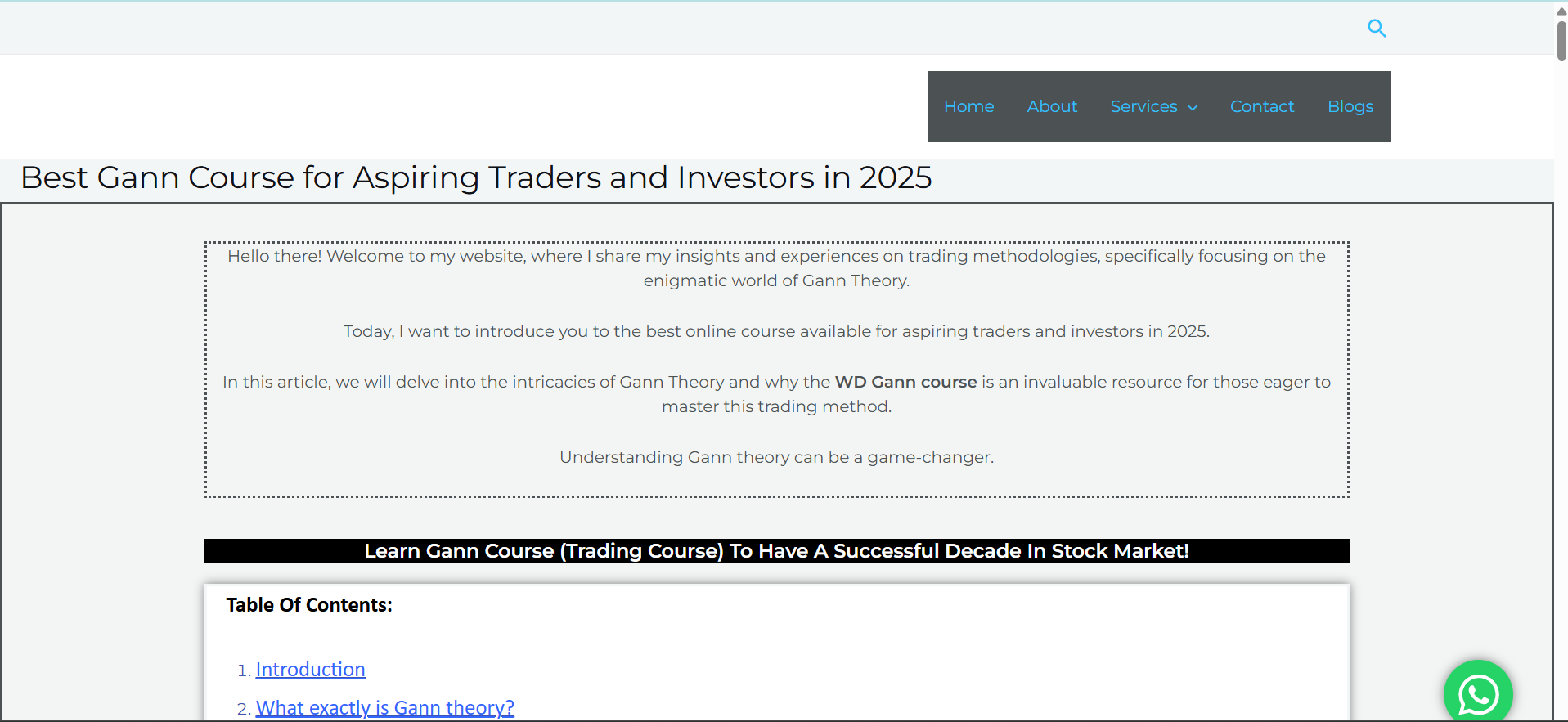Unlocking the Market’s Clock: WD Gann’s Time Cycle Theory Explained

Strong 8k brings an ultra-HD IPTV experience to your living room and your pocket.
Unlocking the Market’s Clock: WD Gann’s Time Cycle Theory Explained
In financial markets, most traders focus heavily on price. Charts are analyzed, trendlines are drawn, and patterns are hunted — all to predict where the market might go next. But one question remains rarely asked: When will the market move?
That’s where WD Gann’s Time Cycle Theory changes everything.
Gann believed that time is the most important factor in trading. While others were busy chasing price breakouts, Gann was identifying when those breakouts were most likely to happen — sometimes weeks or even months in advance. His theory wasn’t based on luck or mysticism; it was grounded in cycles, mathematics, and history.
Let’s dive into the hidden clock that Gann believed governed the market.
also course -- niraj course
What Are Time Cycles?
Time Cycles refer to the repetition of specific intervals of time after which market patterns or major movements tend to recur. Gann discovered that the market is not random — it moves in predictable cycles that are tied to time, not just price.
These cycles could be:
Short-term cycles – like 30, 60, 90-day rotations
Medium-term cycles – such as 180-day or 1-year cycles
Long-term cycles – including 7-year, 10-year, or 144-month cycles
The foundation of this concept is simple: history repeats itself, and those repetitions are governed by time.
The Power of Time Over Price
WD Gann once said:
“Time is the most important factor in determining market movements. When time is up, price will change.”
This profound quote reflects his belief that even if price looks steady, if a time cycle is ending, a reversal or breakout is imminent. Many traders are caught off guard by sudden market moves — but Gann traders expect them because they track the calendar, not just the chart.
Real Examples of Gann Time Cycles
Let’s say a stock made a significant bottom on January 1st. According to Gann’s time cycle theory, we should monitor:
30 days later – a possible short-term top or consolidation
90 days later – a potential major reversal
180 days later – the halfway point in a yearly cycle, often significant
Many of these time-based turns align closely with actual market behavior — especially when confirmed with price structure or volume.
For example:
The 50% time retracement (half of a previous time move) is often a reversal point.
Gann’s famous square of 144 suggests that 144 days (or weeks/months depending on the timeframe) after a major top/bottom can mark another pivot.
Time Cycles in the Gann Course
Learning and applying time cycles can seem abstract without proper guidance. That’s why the Gann Course is designed to simplify this powerful concept. It offers:
Easy-to-understand breakdowns of Gann’s time cycle rules
How to calculate important dates based on past tops/bottoms
Tools and methods to align time cycles with Gann angles and price targets
Examples from Nifty, Bank Nifty, Gold, and other active markets
You don’t need to be a mathematician. You need a structured approach — and this course delivers just that.
The 90-Year Cycle and Beyond
One of Gann’s most famous predictions was based on the 90-year cycle. He used historical data to predict that the 1929 stock market crash would repeat in 2019 (it was early by just a few months — the 2020 COVID crash validated his outlook).
Gann’s research spanned centuries. He tracked historical wars, natural disasters, commodity price swings, and planetary alignments — all tied to time.
He believed that:
The 60-year cycle brings similar economic patterns
The 20-year cycle affects currency movements
The 7-year cycle repeats both in agriculture and equities
This deep historical analysis is rarely found in modern trading, but it provides a strategic edge — not just a technical one.
How You Can Use Time Cycles in Your Trading
Even if you don’t dive into astrological elements, simple time tracking can change your trading game:
Mark important highs and lows – Count 30, 60, 90 days ahead.
Track midpoints – 50% of a prior move often signals reversal.
Watch annual anniversaries – Stocks often repeat behavior around the same time each year.
Align with earnings, elections, or macro events – Time cycles amplify around news-driven zones.
By doing this, your trading becomes proactive — not reactive.
Final Thoughts: Time Is the Missing Edge
Most traders lose money not because they misread the price — but because they misjudge the timing. Gann’s Time Cycle Theory solves that. It offers you a way to anticipate major moves, not just chase them after they begin.
The market, like nature, runs on rhythm. Seasons return. Phases repeat. So do trends — and with time cycle analysis, you can finally see them coming.
If you're ready to unlock this next level of trading insight, explore the full breakdown inside the Gann Course and begin using time as your most powerful indicator.
Because in the market — as in life — timing is everything.
Note: IndiBlogHub features both user-submitted and editorial content. We do not verify third-party contributions. Read our Disclaimer and Privacy Policyfor details.




